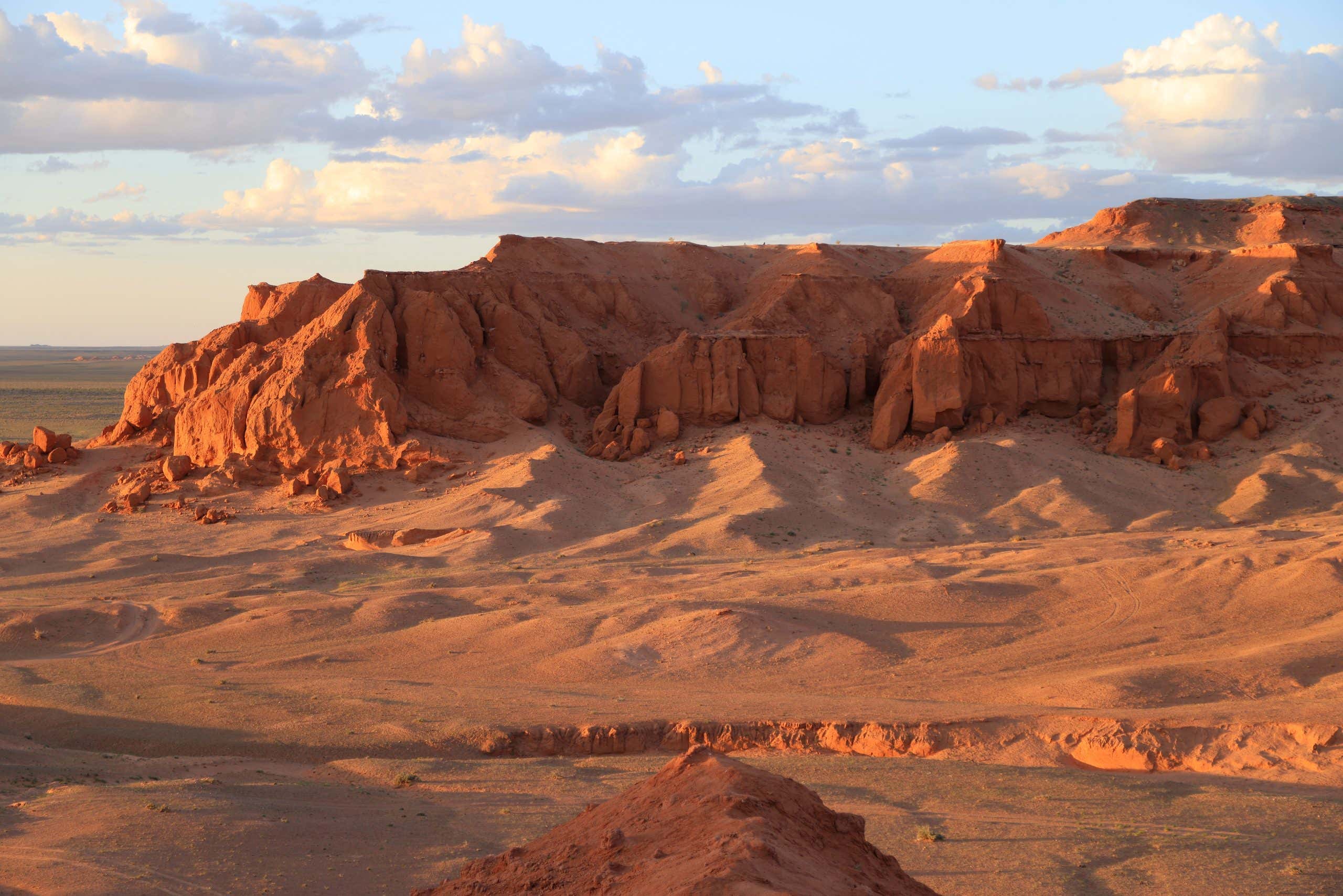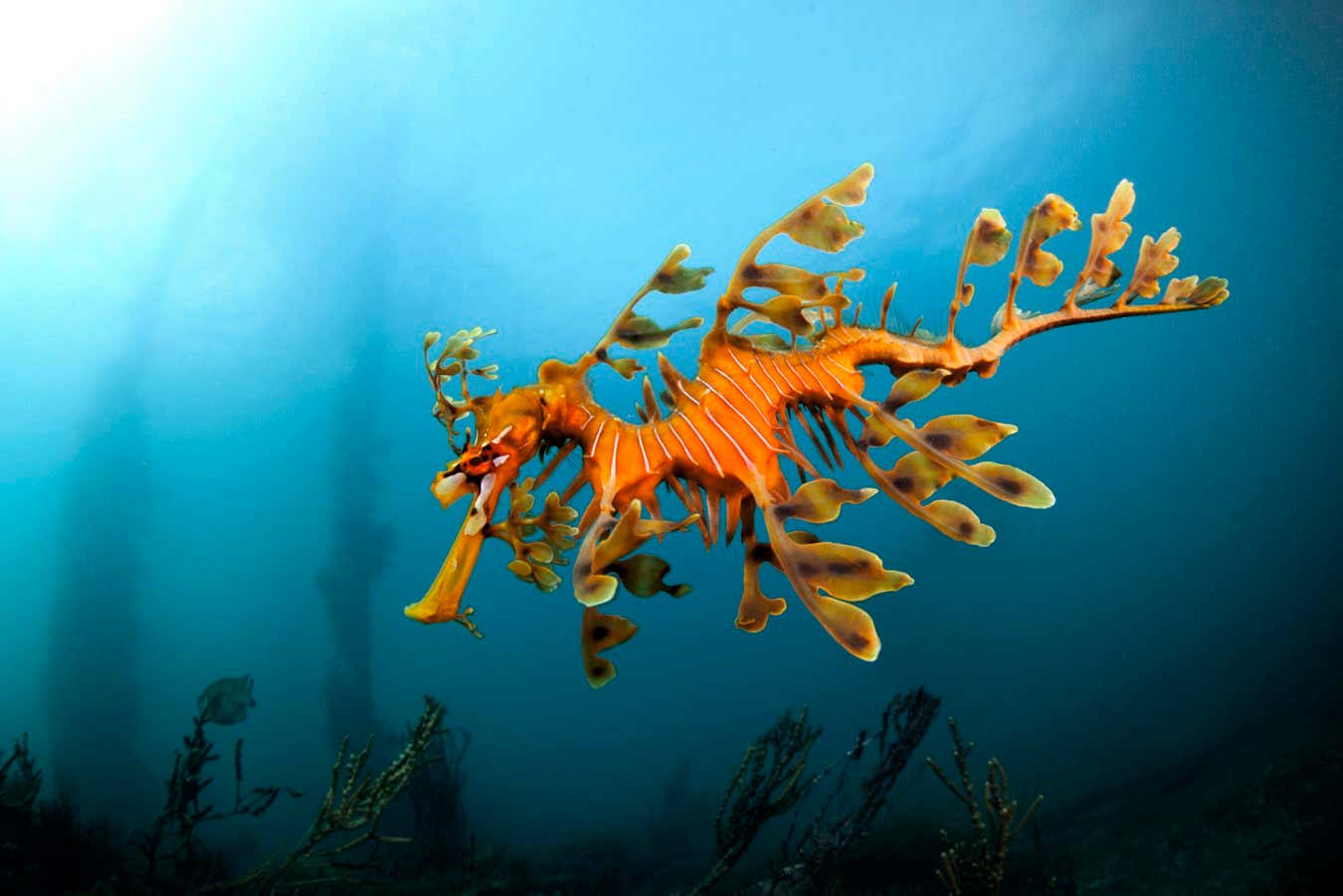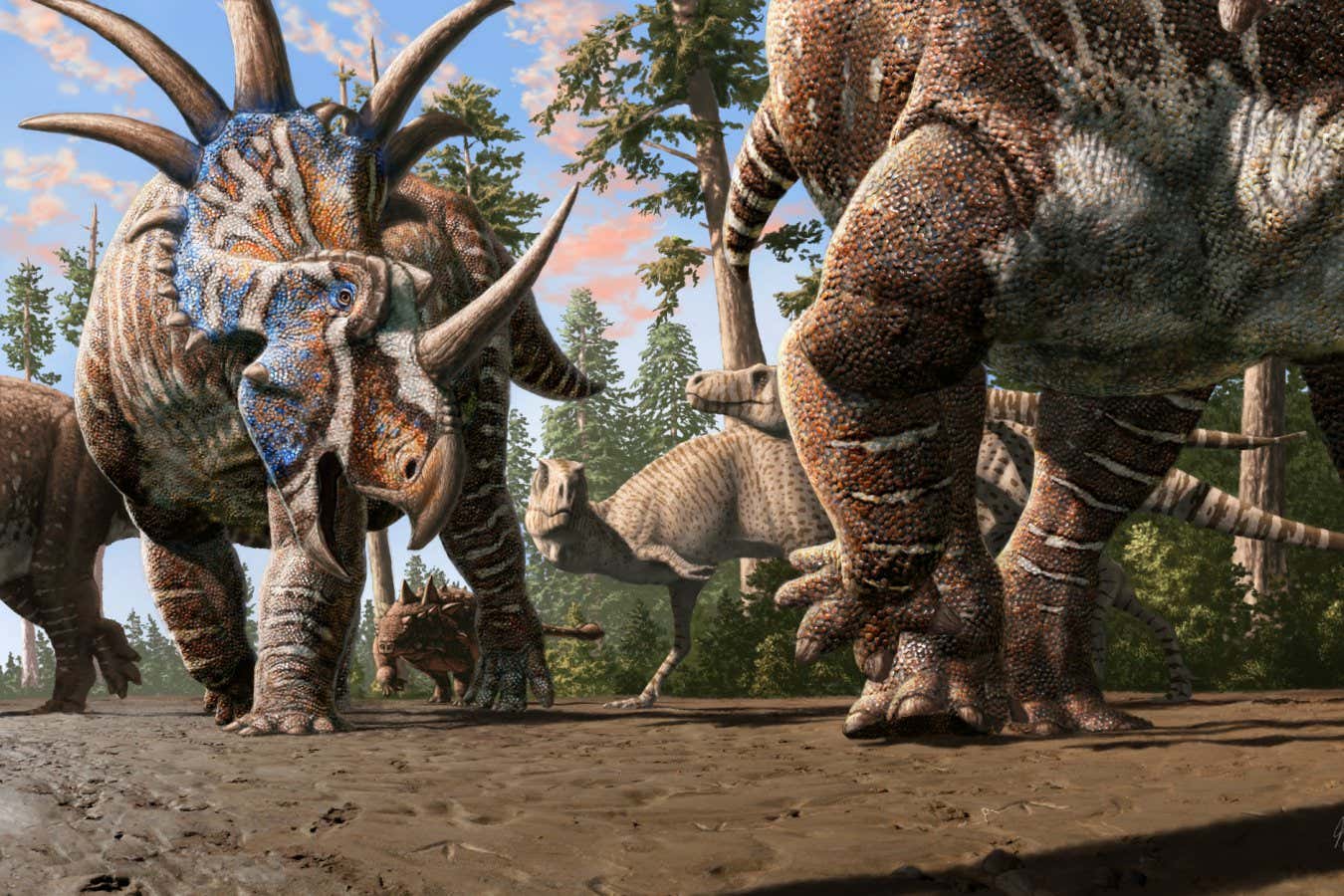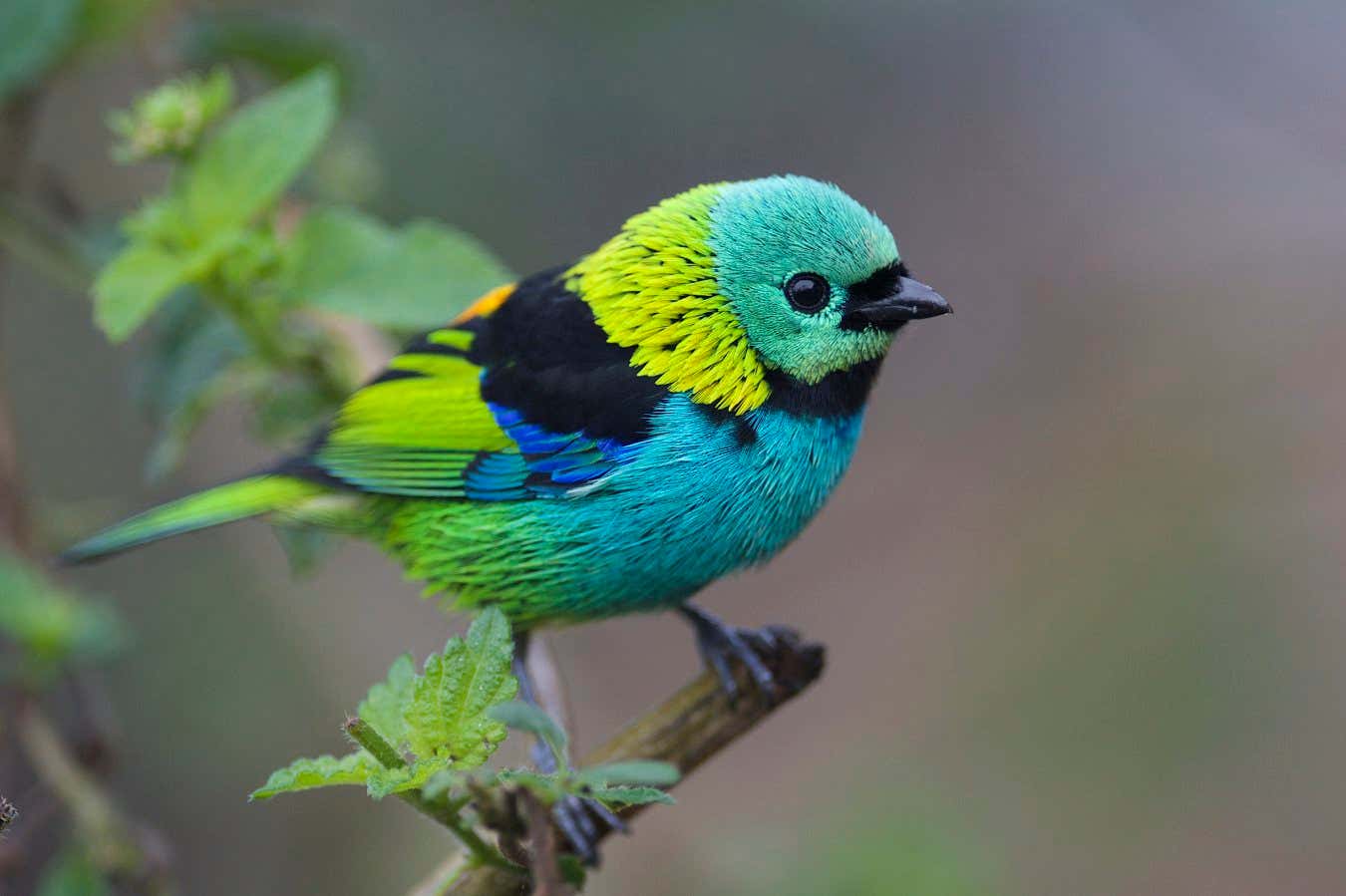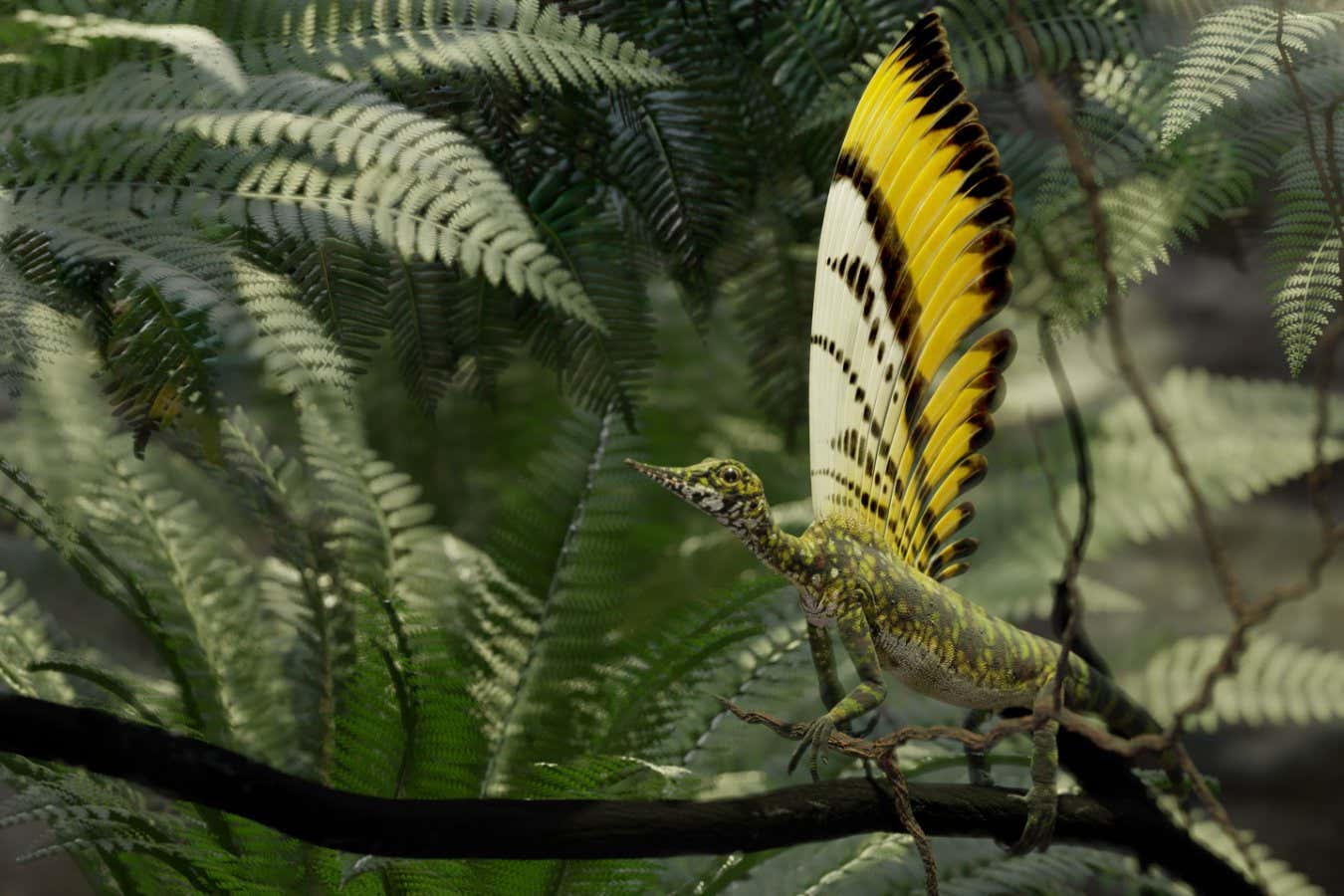Shri rapax fossil Royal Belgian Institute of Natural Sciences, Brussels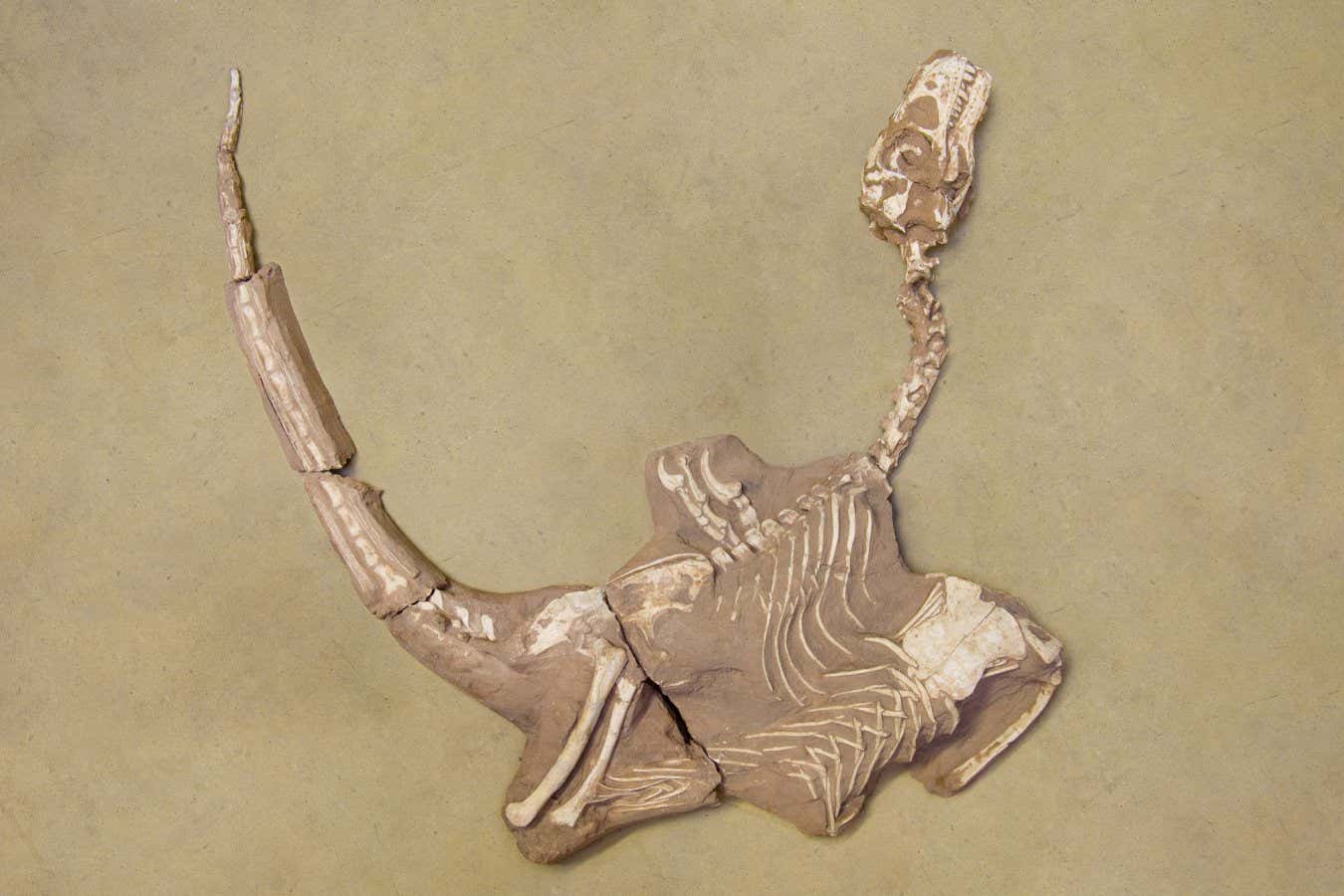
A new species of Velociraptor-like dinosaur from the Gobi desert in Mongolia had giant claws and exceptionally thickset hands, which may have enabled it to take down larger prey.
The name of the species, Shri rapax, was inspired by “the rapacious features we see in the hand”, says Andrea Cau, an unaffiliated paleontologist based in Italy.
Shri rapax measures around 2 metres long and comes from the Djadochta Formation, which was a land of sprawling sand dunes and intermittent lakes between 75 and 71 million years ago.
It was unearthed in 2010 and smuggled into private collections in Japan and the UK before recently being brought back to Mongolia. New work on the fossil by Cau and his colleagues uncovered bones that were previously buried in layers of rock, including the extraordinary hand.
“The extremely robust [heavily built] hand structure and notably elongated claw of Shri rapax indicate an adaptation for powerful gripping,” says team member Tsogtbaatar Chinzorig at North Carolina State University. “Such a configuration likely enabled it to grasp and restrain relatively large prey.”
Free newsletter
Sign up to The Earth Edition
Unmissable news about our planet, delivered straight to your inbox each month.

The middle claw measures 79.5 millimetres, which is nearly twice as long as the same claw in closely-related species like Velociraptor mongoliensis.
“Compared to Velociraptor – which is about the same body size – the hand is 150 per cent more robust and the claw is longer,” says Cau. “This suggests [it] was adapted to hunt animals stronger and more robust than those usually preferred by its relatives.”
The powerful claws of Shri rapax Royal Belgian Institute of Natural Sciences, Brussels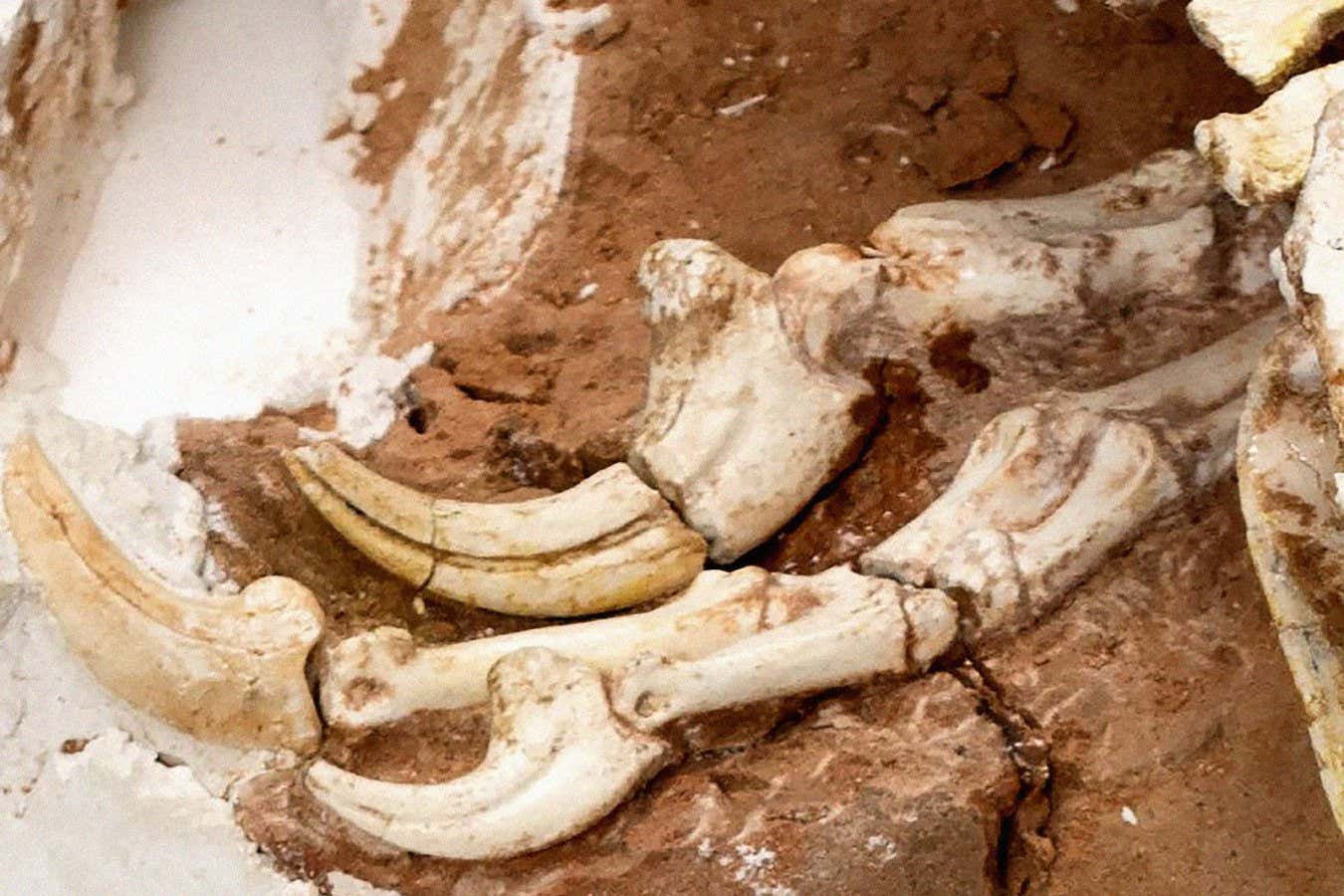
While the skull and several vertebrae were lost prior to repatriation, Cau and his colleagues were able to digitally reconstruct the missing pieces using CT scans of the fossil made in 2016. The results show the skull was probably short and stout, which indicates it also had a stronger bite than many of its peers.
James Napoli at Stony Brook University in New York would like to see the missing skull and vertebrae recovered. “The skull in particular is very important for our understanding of this animal, its possible lifestyle and its position in the story of theropod dinosaur evolution,” he says.
Journal reference:
Historical Biology DOI: 10.1080/08912963.2025.2530148
Topics:
